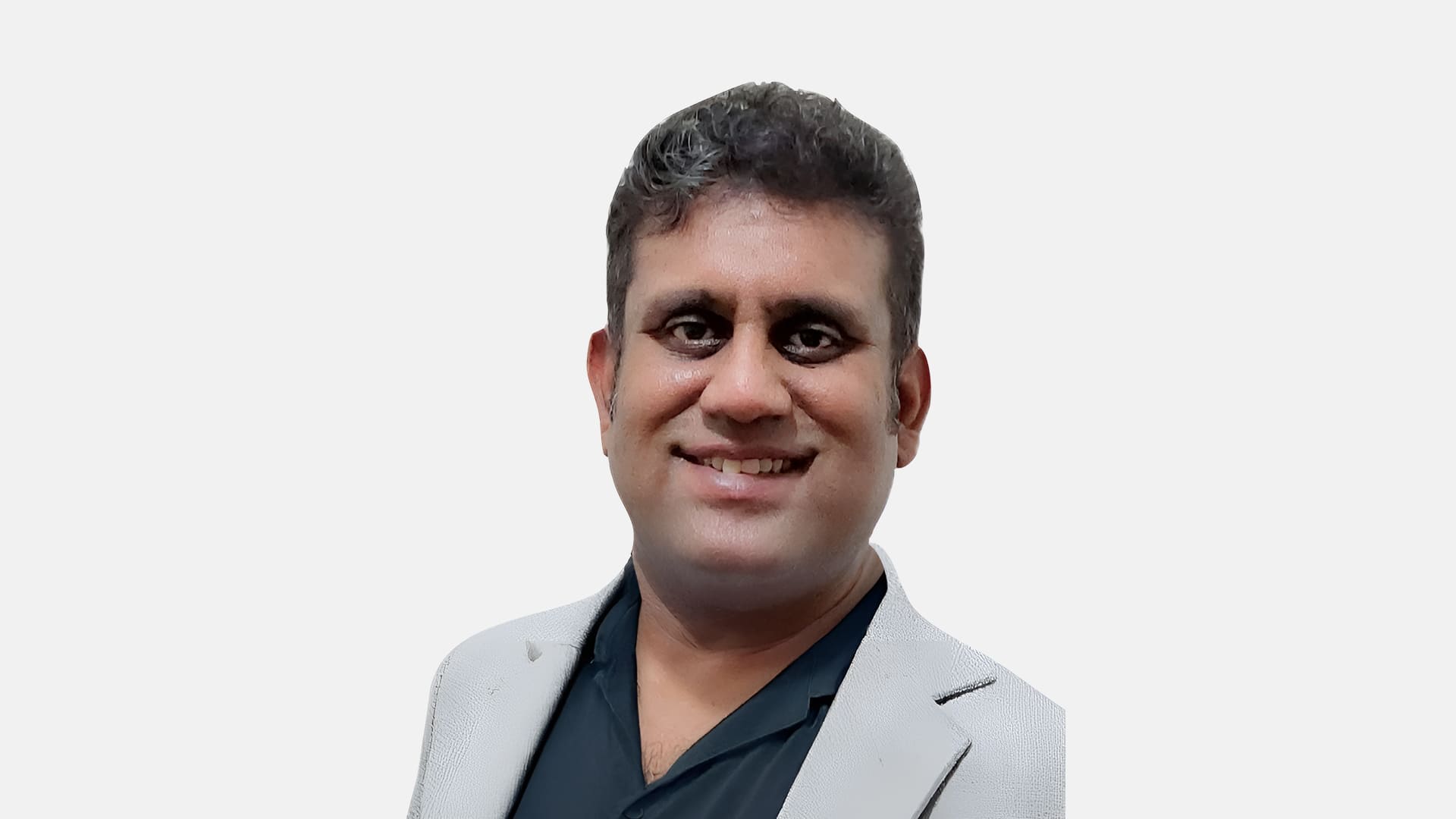Prashant Govindan speaks candidly with AV Today about solving India’s AV talent crisis
As India’s AV industry continues its remarkable growth trajectory, we face an uncomfortable truth: our success is being constrained by an acute talent shortage that threatens our long-term sustainability. After spending over two decades in this industry, witnessing its evolution from fragmented analog systems to today’s connected, sophisticated digital ecosystems, I believe we stand at a critical juncture that demands immediate and strategic action.
The numbers tell only part of the story. While we speak of requiring hundreds of qualified professionals in business roles and thousands in technical positions annually, the real challenge runs deeper. We’re not just short of people—we’re invisible to the very talent pool we desperately need. As we witness at almost every campus we visit, the AV industry remains invisible, with candidates blissfully unaware of the exciting frontiers that AV presents, both career-wise and from a creative fulfillment perspective.
The Visibility Problem
The fundamental issue plaguing our industry is awareness—or rather, the lack of it. When I visit university campuses and mention working in AV, I’m met with blank stares. Students have no idea that behind every corporate boardroom presentation, every concert they attend, every digital classroom experience, lies a sophisticated technology ecosystem that offers exciting, multidisciplinary career opportunities.
This invisibility is self-inflicted. While other industries like IT successfully positioned themselves through bodies like NASSCOM—securing government support, favorable policies, and talent pipelines—we’ve remained fragmented. The IT industry’s transformation from a nascent sector to India’s crown jewel didn’t happen by accident. It was the result of strategic lobbying, government partnership, and systematic talent development. Even as we have become an IT superpower, AV is nowhere in the landscape, as is amply seen from its absence from key government initiatives such as the Ministry of Electronics and Information Technology’s internship program that calls for engineering graduates to develop key software technologies with a guaranteed Rs. 20,000 per month stipend plus mentorship for six months.
The NASSCOM Blueprint
The parallels between IT’s journey in the 1970s-80s and our current situation are striking. IT was once considered a “sunrise industry” with limited awareness among graduates. Through relentless advocacy, NASSCOM secured crucial government concessions—duty-free imports, tax holidays, and policy support. Export-oriented units and programs such as Software Technology Parks of India (STPI) and dedicated software SEZs enabled entrepreneurs to access technology at lower costs and build the foundation for India’s IT superpower status.
Today, any engineering graduate aspires to work for Accenture, TCS, or Wipro. Meanwhile, large AV companies remain unknown entities. This disparity isn’t due to lack of opportunities in AV—it’s due to our failure to communicate our industry’s potential effectively.
The Multidisciplinary Advantage
What makes AV particularly exciting is its multidisciplinary nature. Unlike traditional career paths that lock professionals into single domains, AV offers exposure to IT, audio engineering, video technology, lighting design, control systems, and project management—all within unified solutions. When students discover they can work with cutting-edge technology while exercising creativity across multiple technical domains, their enthusiasm is palpable.
Our industry’s roots trace back to diverse streams: broadcast engineering from All India Radio and Doordarshan, film production, cinema, stage lighting, industrial automation for control systems, and audio engineering from recording and broadcast. This convergence into modern AV represents a unique career ecosystem that few other industries can match.
Building Educational Foundations
Currently, there isn’t a single graduate-level degree program in AV technology in India. Some half-hearted attempts exist in the form of diplomas through film production, sound recording, and acoustics courses, but these do not offer a cohesive, integrated curriculum targeted toward opportunities in the professional or residential AV industries. Students find their way to our industry by accident, either through music production, by working in sound rental or lighting rental companies, or through IT systems integration. This must change through systematic collaboration with educational institutions taking an active role.
We need to co-create curriculum with universities, establishing AV as a recognized specialization within engineering and management programs. This requires more than theoretical knowledge—universities must invest in AV laboratories where students can physically connect amplifiers to speakers, experiment with mixing consoles, configure control systems, understand video through analog and networked distribution, and understand the practical aspects of our technology.
The Certification Challenge
Professional certification remains a critical gap. While training programs like CAVS (conducted by AV ICN) provide valuable knowledge, they lack the institutional credibility that carries weight in hiring decisions. These programs must collaborate with recognized universities and institutes to issue certificates that employers and students value.
AVIXA’s CTS certification, while globally recognized, remains largely inaccessible to Indian students due to currency barriers and payment gateway limitations. A localized, rupee-based certification program could certify thousands of Indian professionals within two years, creating the qualified talent pool our industry desperately needs.
Five Strategic Pathways to Talent Success
Government Partnership and Policy Advocacy
We must collectively lobby for industry recognition at the government level. AV technology isn’t luxury—it’s infrastructure critical for telemedicine, remote education, and digital governance. We need tariff concessions, favorable duty structures, and inclusion in skill development programs.
The government should be made an active partner in this initiative. The Make in India initiative can also be extended to AV for entrepreneurs and multinational manufacturers to invest in local manufacturing.
AVIXA, despite its profitability in India, must invest more substantially in local ecosystem development. We need autonomy to run India-specific programs with campus outreach on a large scale while leveraging AVIXA’s global knowledge base.
Campus Engagement at Scale
Every trade show should dedicate days for student engagement. Instead of bringing a few sponsored candidates, we should organize transportation for hundreds of students from engineering and management colleges across multiple cities. Let them experience our technology firsthand, write synopses of their learnings, and return to campuses as AV ambassadors. Pre-placement talks, industry tech talks, and insights into the AV world will ignite young minds to make AV their career of choice. This applies not only to engineering and technology institutions but also to MBA colleges.
Industry Leadership Engagement
We must engage with captains of industry and political leaders. Technology-passionate business leaders should be delivering keynotes at our conferences. Pro-technology Chief Ministers, HRD ministers, bureaucrats, and senior policymakers should be chairing our industry forums. These leaders want to engage with innovative technology—we’re simply not exposing them to our capabilities.
Mentorship and Knowledge Accessibility
Experienced professionals must actively mentor newcomers. We should each take responsibility for guiding 10-15 mentees, providing career direction that we received from our mentors. Additionally, we need free, accessible online content—video-based courses, quick-start guides, and certification paths that enable self-learning.
Multidisciplinary Skill Development
Our talent requirements span multiple skill sets: AutoCAD designers, field implementation specialists, pre-sales consultants, project managers, and technical sales professionals. Our approach must be equally diverse, recognizing that hiring technical professionals and training them in sales often works better than the reverse.
Building for the Future
Sustainability in our context means building an industry that can perpetually regenerate its talent base. This requires shifting from reactive hiring to proactive talent development. We must create pathways where students consciously choose AV careers rather than stumble into them. The convergence that created modern AV from broadcast, cinema, lighting, and control systems represents our industry’s strength. Now we must leverage this multidisciplinary heritage to attract diverse talent pools and build sustainable growth foundations.
Success in addressing this talent shortage requires collective action. Individual companies can hire and train employees, but industry transformation demands systematic change. We need trade bodies that function like IEEE, ACM, or AES chapters—providing grants, organizing technical competitions, creating publication platforms, and building professional pride among members.
Every interaction with universities, every trade show, every industry forum is an opportunity to build awareness. We must approach this with the urgency of a “war effort”—coordinated, sustained, and strategic.
Conclusion
India’s AV industry has achieved remarkable growth despite limited government support and institutional recognition. Imagine our potential with proper policy backing, educational infrastructure, and systematic talent development.
We stand at a crucial juncture. The digital convergence that transformed our industry from analog systems to IT-based solutions created unprecedented opportunities. Now we must ensure we have the human capital to seize them.
The solutions aren’t complex—they require commitment, coordination, and consistent execution. From government lobbying to curriculum development, from mentorship programs to accessible online learning, from trade show student engagement to industry leader involvement—every element contributes to building India’s AV talent ecosystem.
The question isn’t whether we can become an AV superpower—it’s whether we have the collective will to make the necessary investments in our most critical resource: our people.
Prashant Govindan is India Director of Generation AV and an industry transformation leader with over two decades of experience in India’s AV sector. He has been instrumental in driving awareness and policy advocacy for the Indian AV industry.




